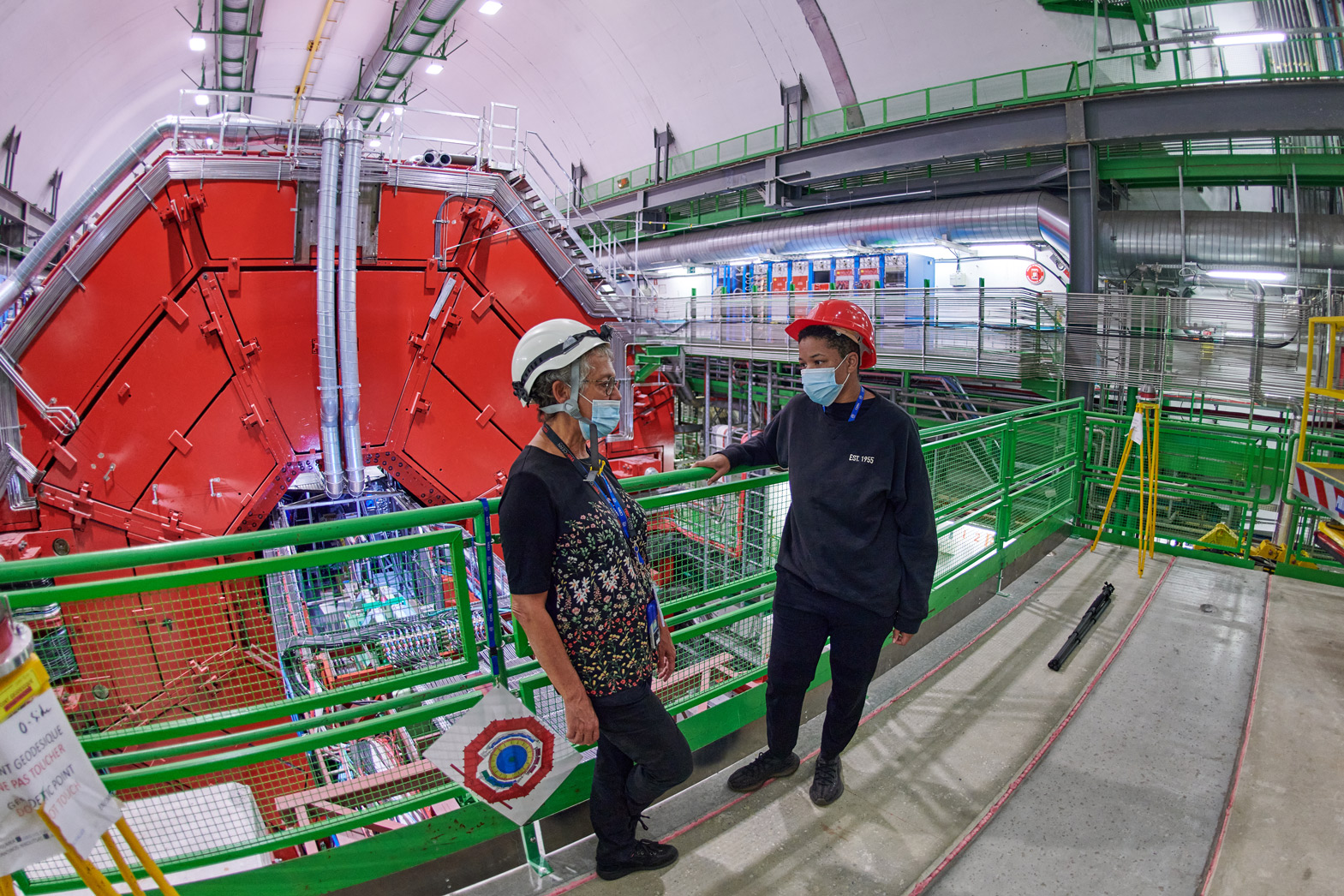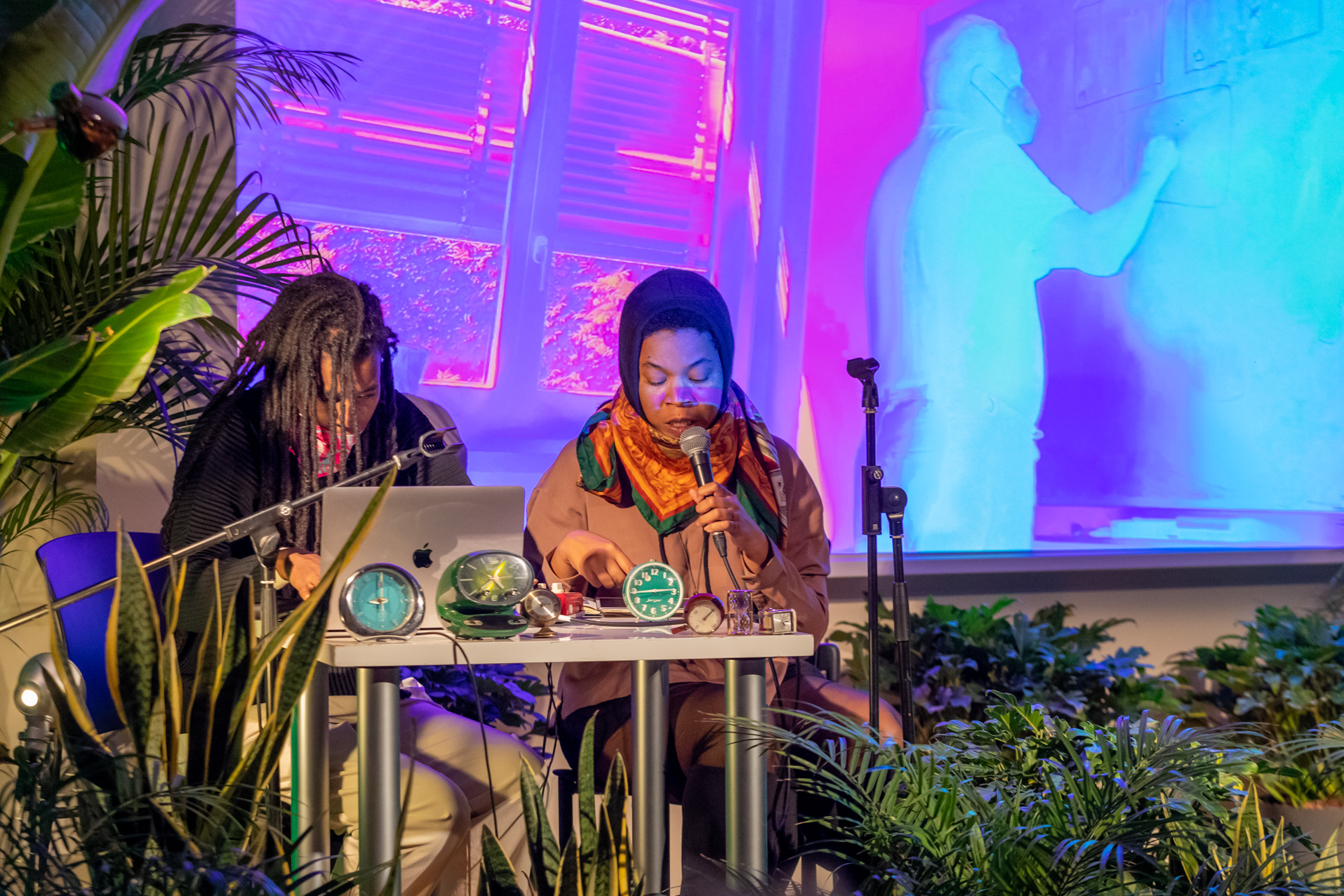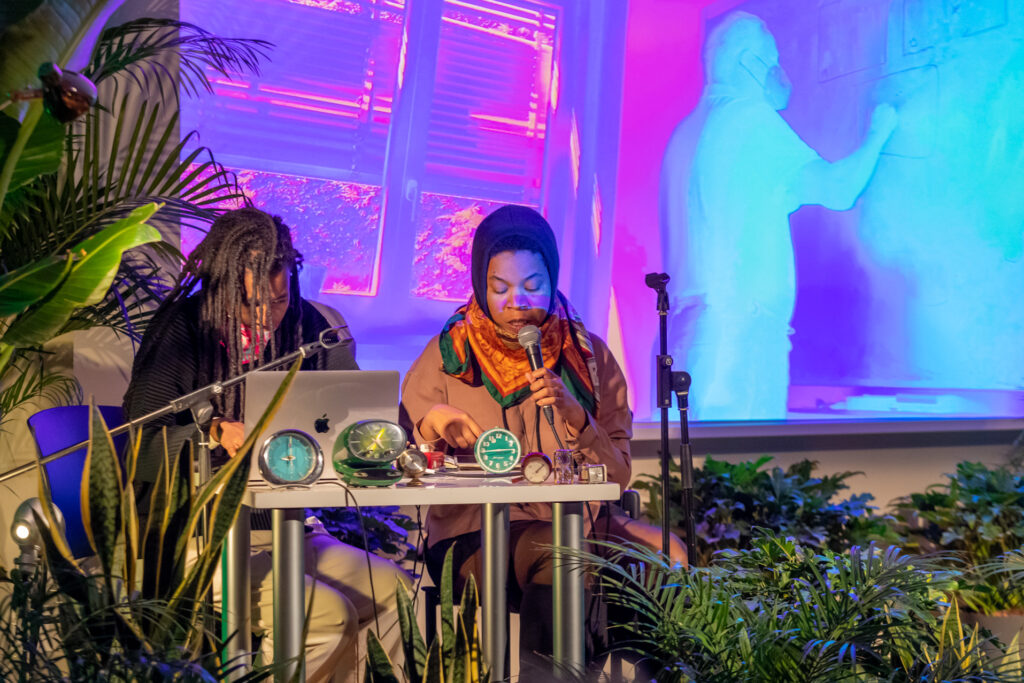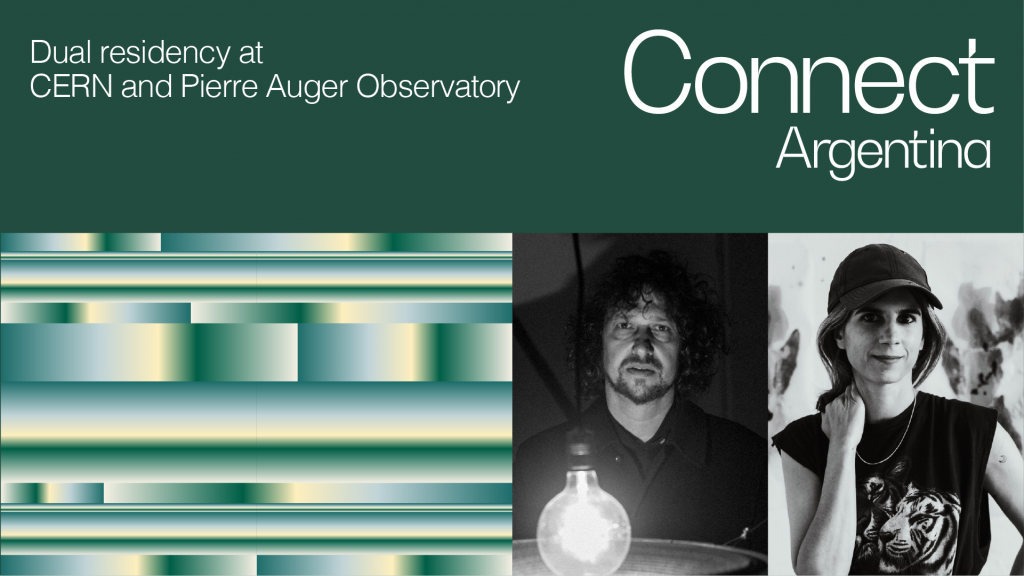- Tags
- Artistic residencies
- Author
- Ana Prendes

After completing the first part of their Collide residency, we delve into Black Quantum Futurism’s artistic research at CERN, their conversations with the scientific community, and the first glimpse of their project, CPT Symmetry and Violations
‘Thinking of time as a physicist is very different to how I think about time as a human. As a quantum field theorist, time goes forwards and backwards. It is reversible; there’s no arrow of time. Obviously, as a human, there is. How you go from having no arrow of time in fundamental physics to having an arrow of time in our human scale is a massive question, and we don’t know the answer’, said theoretical physicist Dorota Grabowska with Rasheedah Phillips during one of their encounters.
Phillips, an interdisciplinary artist, writer and housing lawyer, recently completed the first part of their residency at CERN and Barcelona. Alongside Camae Ayewa, they form the artist collective Black Quantum Futurism, recipients of the 2020 Collide Award.

Weaving quantum physics, ancient African concepts of time, and Afrofuturism, Black Quantum Futurism aims to challenge hierarchical, linear understandings of time. Their work spans writing, visual art, film, creative research, and music, creating counter-chronologies through tools like maps, time portals, and their coined concepts: quantum time capsules and bio clocks. Their practice focuses on recovering communal histories and envisioning futures for Black communities that rupture exclusionary narratives of future and history.
I drew so much inspiration from the visual expression of the science and experiments being done. Art was everywhere where I looked and listened at CERN

Black Quantum Futurism’s residency project CPT Symmetry and Violations
Phillips spent three weeks at CERN and one week in Barcelona researching for their project CPT Symmetry and Violations. In physics, CPT refers to a fundamental symmetry—charge conjugation (C), parity (P), and time reversal (T). According to CPT symmetry, any system of particles moving forward in time follows the same laws as an identical system of antiparticles reflected in a mirror, moving backwards in time. On the experimental front, particle physicists have observed violations of C, P, and CP symmetry. In the search for new physics, many of them at CERN, no experimental evidence of CPT violations has been found.
CPT also stands for ‘Colored People’s Time’—a stereotype commonly employed in the United States implying that Black people are chronically late. Black Quantum Futurism reinterprets this as a cultural understanding where experiences do not adhere to strict schedules and linear time. Intrigued by this double meaning of the acronym in physics and culture, Black Quantum Futurism’s research at CERN examines how quantum physics can influence how people think about, experience, and measure time in everyday reality. From retrocausality to time reversal, their work explored the possibilities beyond traditional notions of time, blending scientific inquiry with cultural critique.
How you go from having no arrow of time in fundamental physics to having an arrow of time in our human scale is a massive question, and we don’t know the answer

Immersion in the Laboratory’s community
From exploring several experiments–including the ATLAS, ALICE and CMS detectors at the Large Hadron Collider–to spending hours in CERN’s library and interacting with physicists, engineers and IT staff, Phillips became immersed in the Laboratory’s environment. ‘The residency reinforced for me that the boundary between art and science is arbitrary,’ Phillips remarked. ‘There was art all over CERN: from the colours, sounds, and shapes of the machines used in experiments to the visuals and animation employed to convey ideas and educate. As an artist, I drew so much inspiration from the visual expression of the science and experiments being done, not just the ideas and concepts behind them. Art was every where I looked and listened’
Phillips’ interest in the violations of CPT Symmetry took them to CERN’s Antimatter Factory, where physicists study the matter-antimatter asymmetry. As one of the greatest challenges in physics, violations of the CPT Symmetry might shed light on why we live in a universe composed almost entirely of matter but no antimatter.
We study phenomena within tiny slices of time, but we can’t move backwards or alter our subjective experience of it
As matter and antimatter annihilate within billions of seconds of being formed, experimental physicists have excellent control of time in their experiments. However, research physicist Michael Doser found it more complex to describe it. ‘What is time? I think not one single physicist in the world has an answer to this question. […] Time just flows. We have no way of moving forwards or backwards in time, ourselves, and we want to step back from time, but it is not under our control. I have no idea what time is; I know how to control the sequence of things that occur in tiny slices of time and to study the phenomena that happen within, but I can’t change the ordering, I can’t go backwards, and I can’t change my subjective perception of time,’ Doser remarked to Phillips.

Expanding their artistic research in Barcelona
After Geneva, Phillips travelled to Barcelona to deepen her research and start the production of their new works, which included new conceptual time tools. They were supported by the Interaction and Production labs at the Hangar Centre for Art Research and Production, which provided their equipment, facilities, and production team within its context for experimentation and free knowledge transfer. To expand their research, Phillips also engaged with Barcelona’s scientific community, including theoretical physicist Diego Blas from The Institute for High Energy Physics (IFAE) and Xavier Luri, Director of The Institute of Cosmos Sciences (ICCUB).
At the Manifesta 13 Biennale in Marseille, Black Quantum Futurism presented a large-scale bio clock installation conceived as an interactive public artwork. The piece challenged conventional understandings of time by responding to visitors’ movements and sounds, offering alternative temporalities—communal, personal, and global.

From fluctuating its rotating speed depending on the viewer’s distance to being triggered by sound volume, BQF’s series of bio clocks seek to challenge how we engage with time. At the Manifesta 13 Biennale Marseille, they presented a large-scale bio-clock installation conceived as an interactive public space. Pointing at different time dimensions instead of numbers, the work responded to each visitor’s movements through a series of dials, giving voice to varying communal, personal, and global temporalities.
In a recent essay on e-flux, Black Quantum Futurism introduced their quantum time capsules. Including stories and objects usually rendered invisible, these conceptual tools elude linear space-time, trouble our notions of past, present, future, history, and progress, and question expired presumptions and understandings of time.
CPT Reversal, preview of their residency work
Their exhibition CPT Reversal at REDCAT, CalArts’ Center for Contemporary Arts in Los Angeles, presents the first works resulting from their residency at CERN. Through videos, collages, maps, sounds, and other visual works, the exhibition examines time and temporality at various scales and dimensions–personal, interpersonal, communal, global, and cosmic. One work, CP Timeline (2021), reflects both meanings of the CPT acronym, illustrating how these dimensions intersect across different media, considering these incidences as interconnected rather than accidental. CPT Reversal will be exhibited at REDCAT from 6 November 2022 to 5 March 2023.
Phillips and Ayewa will return to Barcelona in November and to CERN next year to complete their three-month residency, further expanding their work on constructing alternative temporalities and time tools informed by physics.





